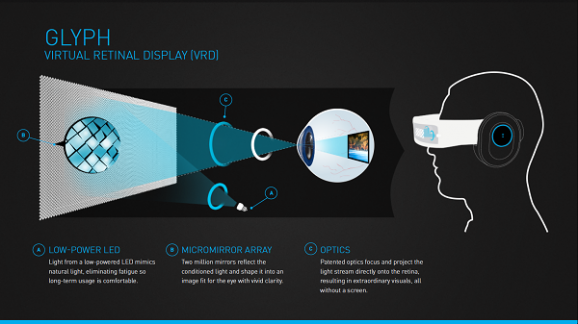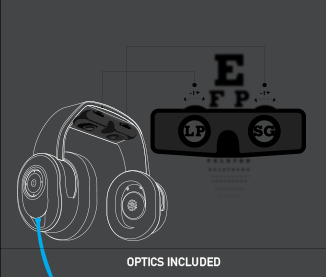Move Over, Google Glass—Glyph Beams Images Straight Onto Your Eyeballs
This article is more than 2 years old
It was only a matter of time before Google Glass spawned other similar technologies. Glyph is one of those — a headset that uses something called Virtual Retinal Display to project images right onto the wearer’s retinas.
Glyph looks like big, noise-cancelling headphones that slip down over the wearer’s face. But instead of blocking the wearer’s view, it provides a whole new one unlike anything we’ve experienced before. Avegant, a company based in my old stomping grounds of Ann Arbor, Michigan, has devoted a lot of time and energy to figuring out how a small screen can deliver quality images. That’s how they came up with Virtual Retinal Display, which requires no screen at all, but rather uses one million micro-mirrors and optics to mimic natural human lighting and vision. Thus, the images are solid, sharper, and more real — there’s no pixelation at all.

Avegant originally envisioned Glyph for military uses, but soon realized that its applications extended far beyond that. The device can interface with anything that can be hooked up to a screen, and can be used for everything from listening to music to watching videos to playing video games. Given its visual display, it promises to deliver the most realistic virtual reality experience yet. Its features will only grow — Avegant eventually wants to integrate an LTE chip that would turn Glyph into a phone as well. It seems that there’s not much Google Glass offers that Glyph doesn’t or won’t in time.
The appeal of Glyph is evident in its wildly successful Kickstarter campaign, which reached its $250,000 goal and went on to amass over $1.5 million in pledges.

You can pre-order Glyph for $499, and it will ship in early 2015. Those will be Beta models, which will be more refined than the current Alpha prototype, but they’ll still have “room for growth.” From what I can tell, they have pretty limitless potential. And we’re yet another step closer to implants that will transmit all of our media and communications right into our brains.












